After a rather troubled night and a cold morning spent mostly woken up waiting for it to be 7 am, I was off into the chilly morning of Kargil. Dodging curious onlookers and filling up petrol at the solitary pump open at that hour.
Early progress was fast. Super cool roads and very sparse traffic. Frosty kept eating up the miles like they didn’t matter. The curves didn’t either despite the warnings from BRO (“Be gentle on my curves” and “Darling, I like you but not so fast”). But all this time, it was way too cold to take out my hands from the gloves. Finally, I emerged from the shadows and met the first sunlight. Warmed a little bit, I stopped. There was no hunger but a cup of tea would have been highly appreciated. The dark clouds from the horizon had not disappeared though.
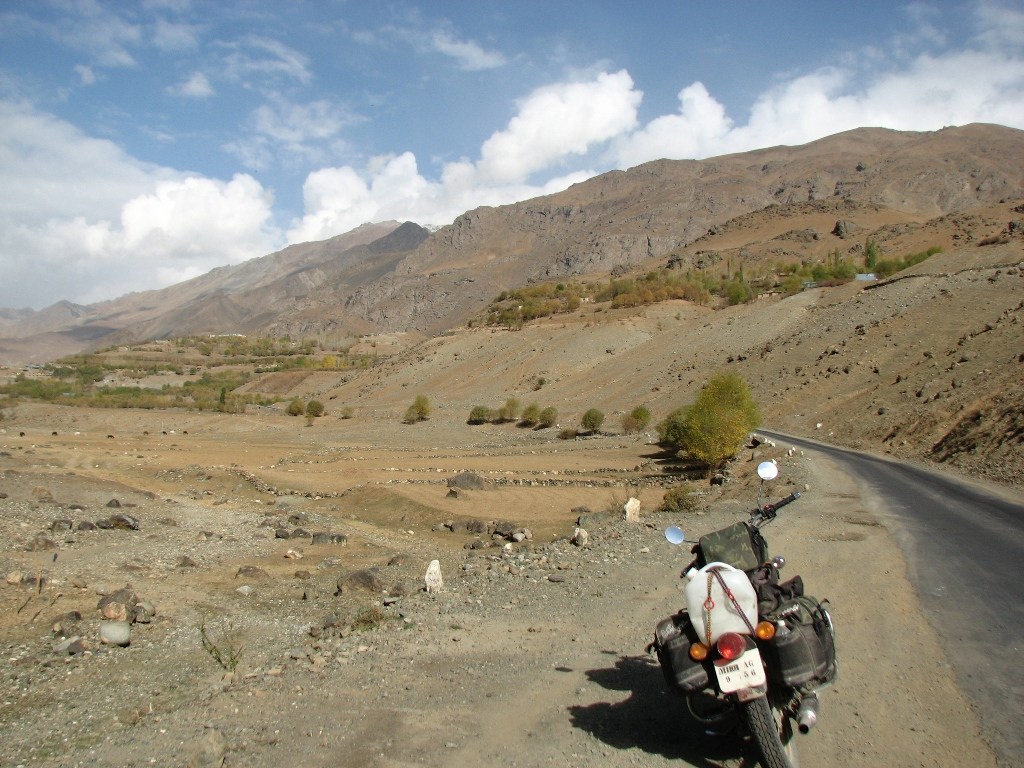

Dras came early. As I passed the town waving to the kids going to school, I nearly miss it. The Dras War Memorial. Built in the memory of those of died fighting the Kargil War of 1999. I turn around and go in. Its beautiful. And eerie.
The first thing that the army guy accompanying me tells me is if I remember Tololing. I say yes, that was one of the most important peaks. He then points to the mountain (actually it is a sort of ridge) bang in front of me and says, this was it. In the picture, Tololing is the mountain that covers the whole of the background. I was stunned. It is so close to the highway that you could literaaly extend your hand and touch it. How did they come so close? Its a long and interesting story. And it will be told another time.

He then turns left and points to the snow capped peak and says, That’s Tiger Hill. Arguably one of India’s most famous battles ever, Tiger Hill was shining bright. He tells me the story in detail. He then proceeds to other stories. Of the lady who was doing the recce for Pakistani forces. About Musharraf’s briefings just behind Tololing. Of the importance of Tiger Hill. Of why the army never found out about the intrusion. About the herders who finally sounded it out. About the delay by the air force. About how it all ended. And about how things have changed since then. Its a very very interesting and engrossing story. Most of all, it opens one’s eyes to what the ground realtity of Kargil War was. The terrain in mind boggling. The air sparse. What it means to have position of height to have tactical advantage becomes immediately clear when one stands under the mountain. Everyone should go there once.

I proceed to the other exhibits.
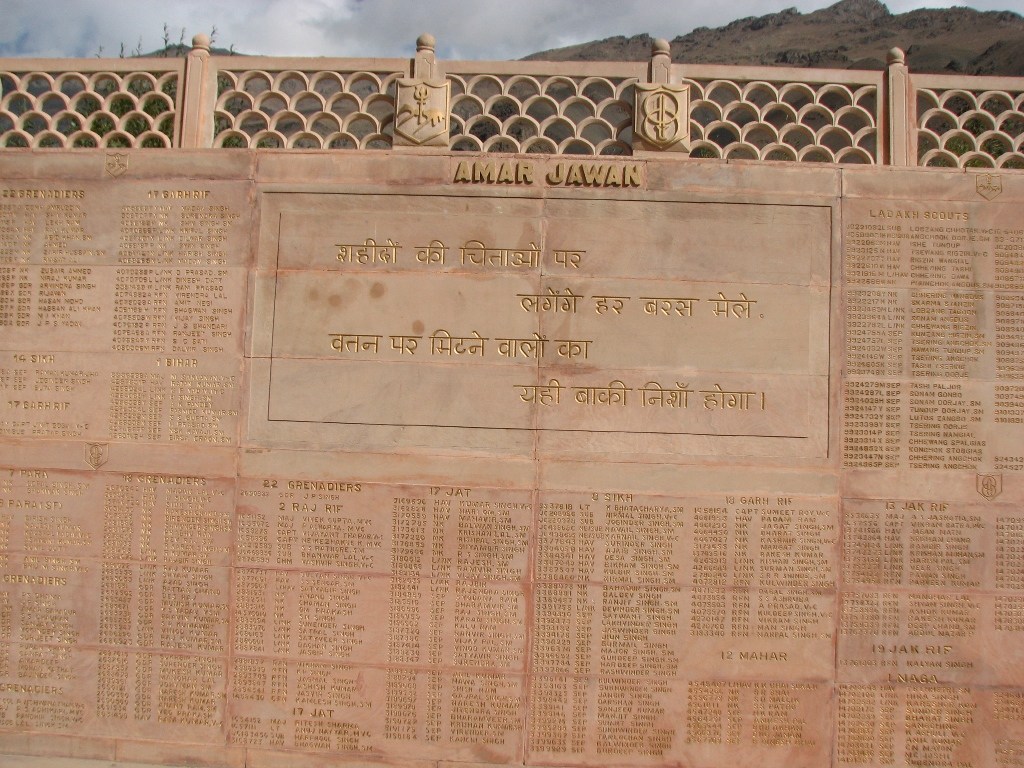
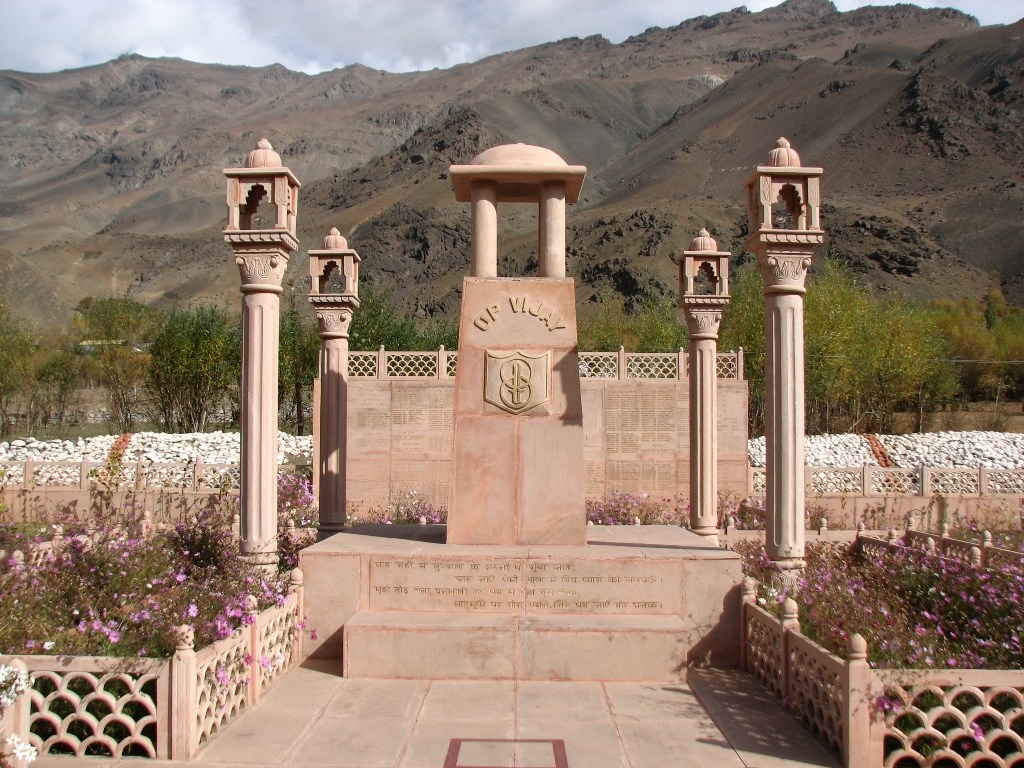
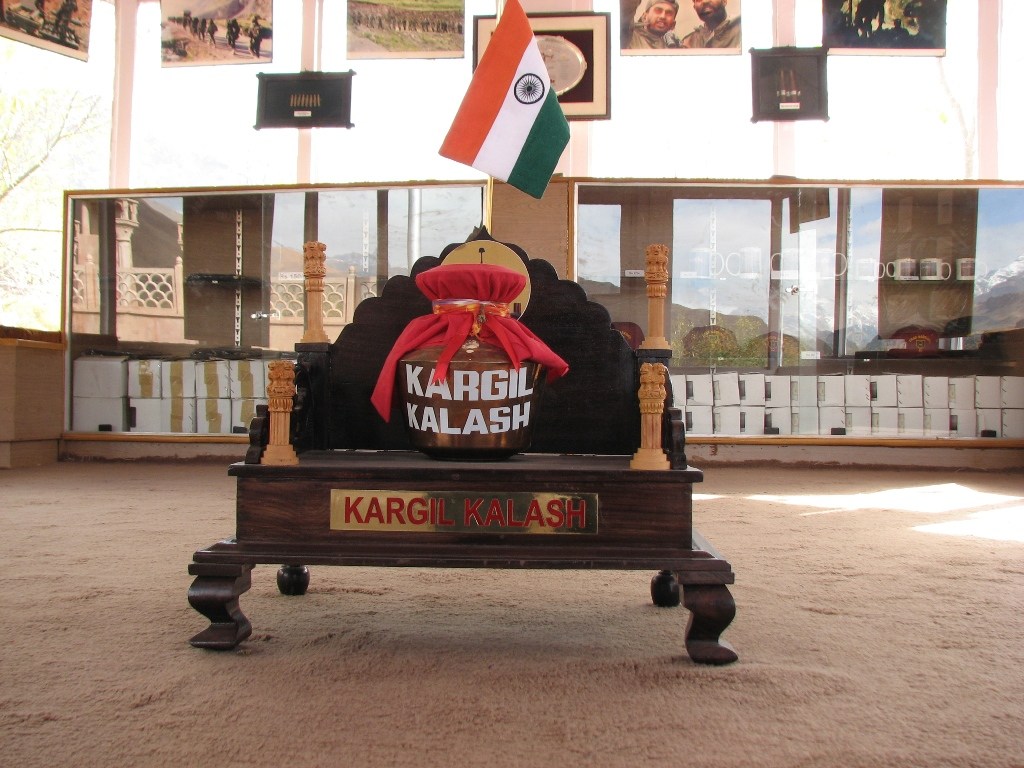
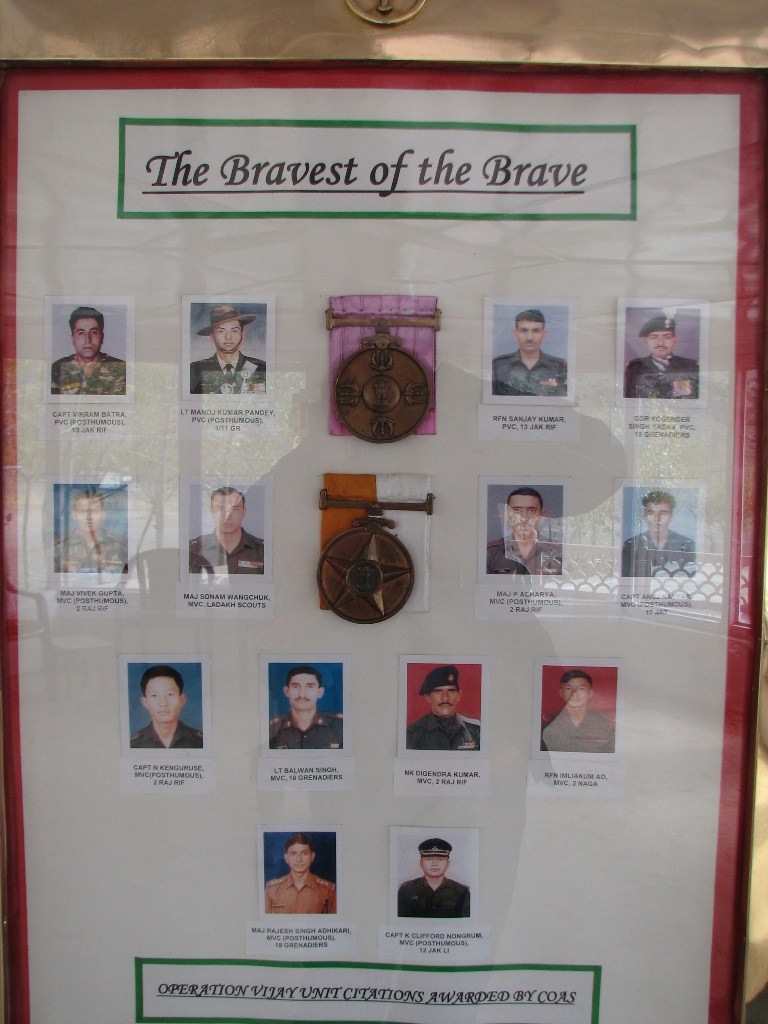
Just then a couple of helicopters arrive to go for a recce in the mountains.

The next few hours have not been captured on camera. And these few hours have been the best for the last three weeks.
As I leave Dras, I see a board saying Mashkoh Valley and Tiger Hill. Knowing nothing better to do, I turn determined to go till the army will allow. I utilize the Torque Wins Friends rule again and am positively surprised by the torque on the bike. Three hefty people up a 65 degree slope without a hitch. Mashkoh Valley is beautiful like you would expect any quaint village in the valley to be. But soon the village is out and open roads begin. After about 20 minutes, I arrive at the checkpost of an army camp. It lies square in the shadow of Tiger Hill. Its an artillery division manning 7 guns all pointed right into the sky and onto Tiger Hill. I introuce myself to the armymen there. Visibly happy to see me, they invite me over for some tea. There I am sitting in the shadow of Tiger Hill, sipping tea with the men who fired the artillery barrages at the peak and discussing how the battle went. I was curious and kept asking questions. And they were more than willing to oblige. They were not relenting, mind you. When I asked for photographing the guns, they flatly denied. I didn’t mind the no either.
For an hour I sat there discussing everything from the war to the food to their posting to their marriages. It didn’t feel like I was less than 6 kilometers from the Line of Control. It felt like home and familiar faces all over. As I rode on, I thought behind. The people I had met were the ones who makes us proud. And they were all human. Do we miss something in the business of war?
The next few hours from Dras to Zozila were spent battling the elements. Rain. Snow. Hail. Wind. Cold. All at once. I was wet and witless. I just rode like I knew nothing else to do. I was hungry but couldn’t afford to stop. I crossed the largest stream till date. It was a frigging river, over 25 feet wide, at Gumri. My feet went down in the water. Now I was riding with feet as heavy as ice blocks. One hour later, I find myself in Sonmarg. Freezing my butt off. The hunger got the better of the cold. I stopped, had lunch, changed socks and decided to move before I froze to death. Zozila was a mess. Especially after an army guy put me on to the long road up rather than the short cut down. The views were spectacular.
All these things seemed to pass me like a photostream. It is events and times like these that makes it all worthwhile to travel all over the country wetting your ass in sub zero temperatures. This, really is the essence of touring. This is what I was here to do. This is life on the road.
I was in the valley.

Soon, I had entered Srinagar. I headed to Dal Lake and checked into the hotel. Went out for a stroll and ended up in a Shikara. The view was beautiful.
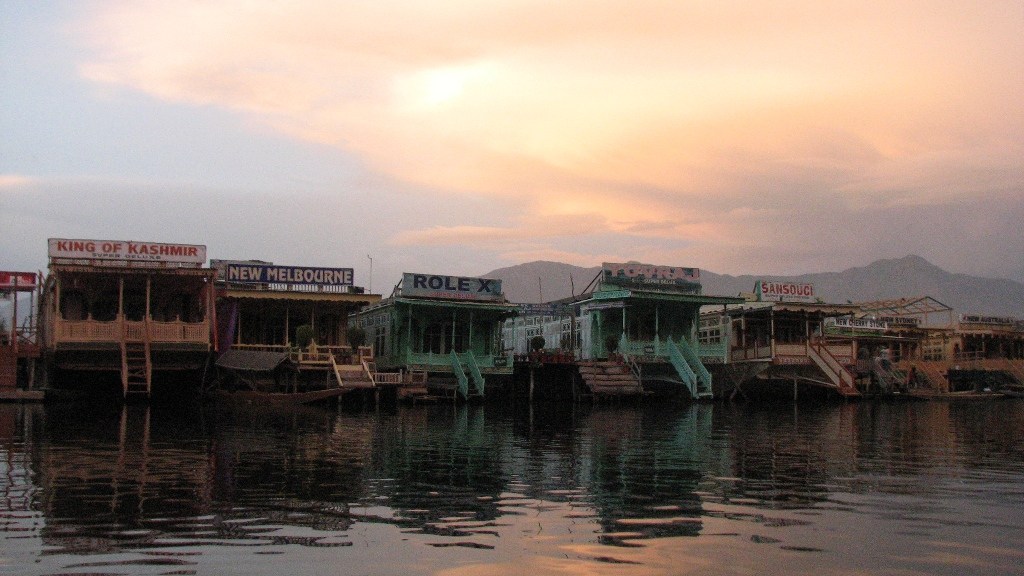
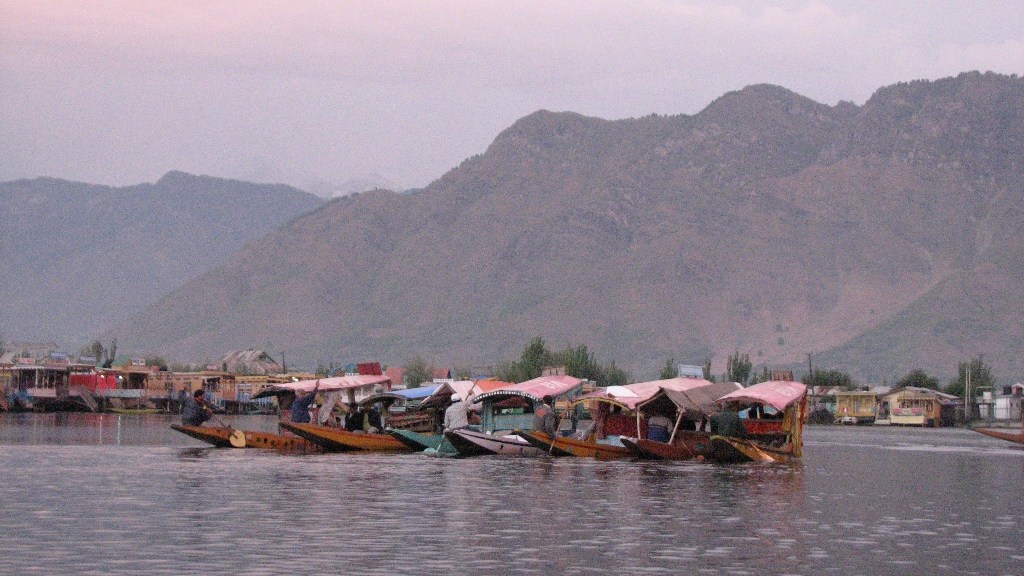
Leaving with this last picture. Bob Marley shikara. Damn neat.
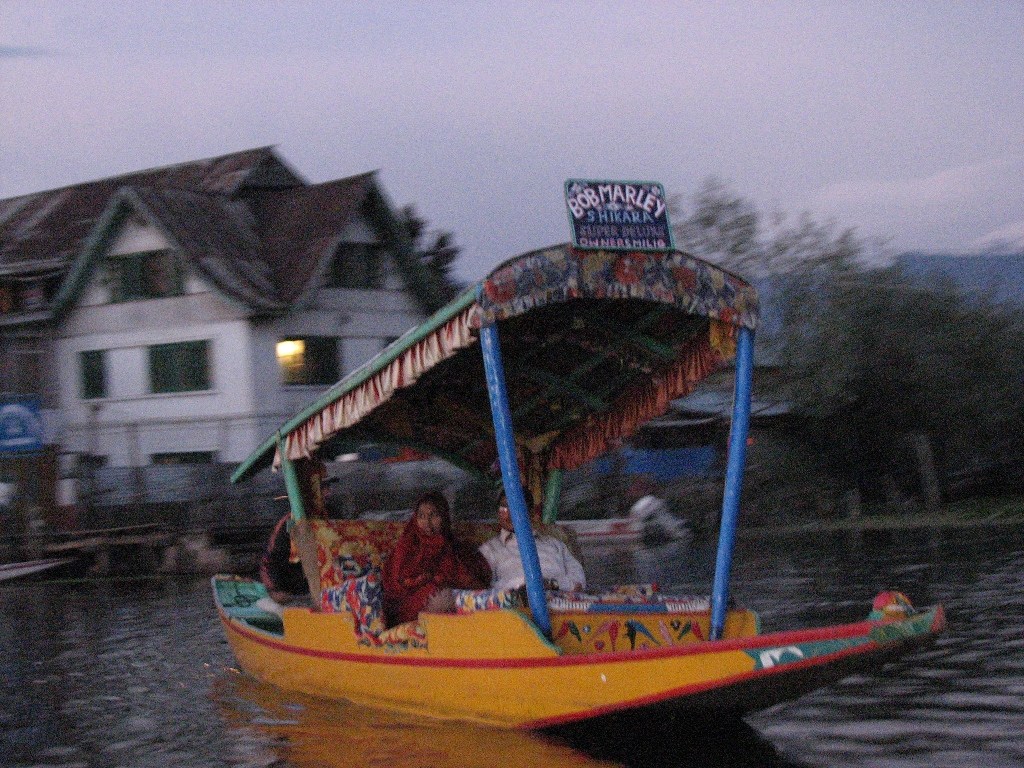
Comments